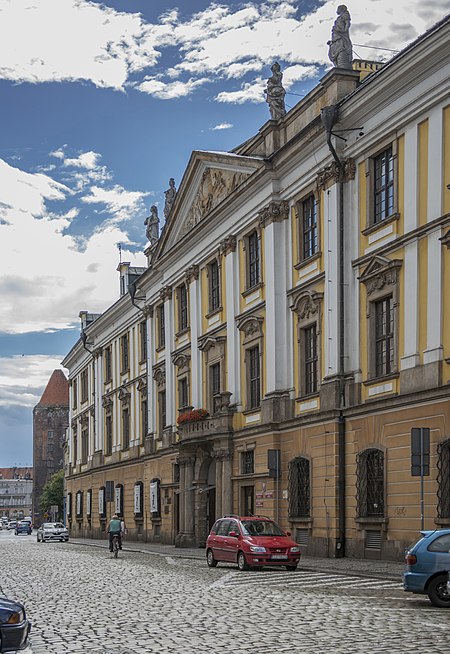Liegnitz Ritter-Akademie
Schools in Poland

The Liegnitz Ritter-Akademie or knight academy was a school for the sons of the silesian aristocracy and landed gentry established in early 18th century, shortly after the signing of the Treaty of Altranstädt (1707). The school was erected in the Habsburg ruled town of Liegnitz, and at least in part was founded from money earlier collected by Duke George Rudolf of Liegnitz, who had planned school of this type in his Capital. It operated as a school until 1945 and then After World War II, in 1945–1992, the building served as one of the main Soviet quarters in people's Poland, specifically for the Northern Group of Forces.
Excerpt from the Wikipedia article Liegnitz Ritter-Akademie (License: CC BY-SA 3.0, Authors, Images).Liegnitz Ritter-Akademie
Świętego Jana, Legnica
Geographical coordinates (GPS) Address Nearby Places Show on map
Geographical coordinates (GPS)
| Latitude | Longitude |
|---|---|
| N 51.208231 ° | E 16.158772 ° |
Address
Wydziału Komunikacji UM
Świętego Jana
59-220 Legnica
Lower Silesian Voivodeship, Poland
Open on Google Maps











